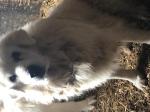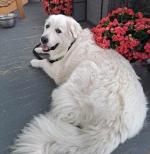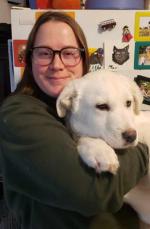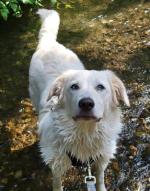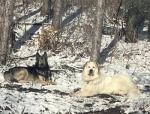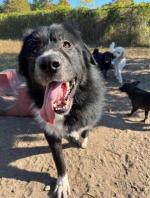height of fence needed
by Helen Yzaguirre
(Rock Hill, SC)
I have small side yard about 12 wide by 80 ft long with 4 ft black aluminum fence. People and dogs walk by during day. The front of house has 3 ft fence. If trained and socialized from a pup will my Pyrenees bark at neighbors and try and jump the fence? I would be walking my Pyrenees up to 5 miles a day. I am retired at with my dog most of the day.
Comments for height of fence needed
|
||
|
||
Breaking News
-
Lexi
Apr 17, 24 05:10 PM
Sadly, Lexi passed away today on April 17th, 2024. We send our heartfelt condolences. This is from her family: I wanted to share with you that Lexi on -
Charlie
Apr 16, 24 09:05 AM
*Charlie has officially been adopted!* DOB: August 1, 2022 (1-year-old and 4 months) Location: London area Well-behaved children over 12 due to his -
Buster
Mar 20, 24 04:27 PM
DOB: 2016 (7-years-old) Location: Acton, Ontario Good with people, especially children Gets along with dogs Big white fluffy mix. The rescue recommends -
Courtesy Posting - Sarge
Mar 16, 24 06:29 AM
Location: Skokie, Illinois, U.S.A. Age: 3 years old Gender: Male, 75 lbs Children: Yes, with proper introduction Cats: Yes, with -
Nordic and Dolly
Jan 26, 24 06:13 AM
A local person found Nordic, Dolly, their siblings and mom running in and out of traffic in -40 C this winter in a remote area on the highway an hour north -
Courtesy Post - Winter
Jan 14, 24 06:36 AM
DOB: Approx. November 2022 (1-year-old) Location: Lower mainland of B.C., Canada – Be prepared to meet Winter in her present home Companion Dog People: -
Nanook
Jan 03, 24 07:55 AM
*ADOPTED* DOB: Approx. Nov. 15, 2021 This sweetheart Pyr, Nanook, was left at a shelter. The shelter contacted us to bring him in as he wasn’t doing -
Courtesy Post - Momo
Dec 11, 23 08:54 AM
Momo DOB: Nov 19, 2020 (3-years-old) Location: Trenton, Ontario Good in car House-trained Fine on stairs Separation anxiety: No Reactive to dogs.





